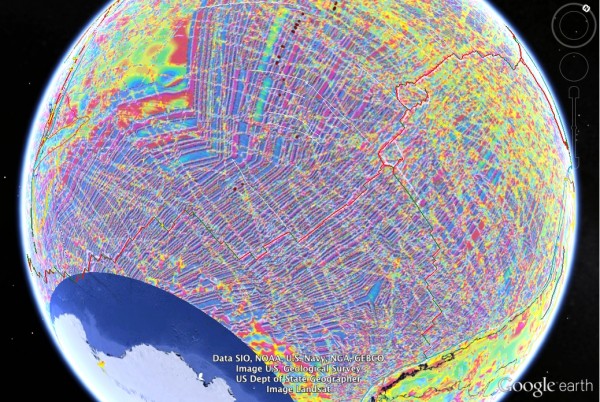This image shows magnetic anomalies in the South Pacific — underwater
lines where the crust of the Earth either matches up with the planet's
overall magnetic polarity (reds and purples) or is completely reversed
(blues). Invisible to the naked eye, these stripes run along all of
Earth's ocean basins. We first noticed them in the 1950s and, at first,
they were a giant mystery. Why would there be these distinct lines of
magnetism, and why would the lines fluctuate in their polarity? As Chris
Rowan explains at the Highly Allochthonous blog, the answer ended up
being a key part of
proving that chunks of the Earth's crust were moving away from each other.
Fred Vine and Drummond Matthews thought through the
consequences of the hypothesis put forward by Harry Hess, that new
oceanic crust was being continuously produced by the eruption of basalt
at mid-ocean ridges. When combined with the facts that newly cooled
basalt has a strong remanent magnetisation aligned with the ambient
magnetic field, and that the Earth’s magnetic field reverses its
polarity every million years or so. Vine and Matthews* argued that if
seafloor spreading was indeed occurring at mid-ocean ridges, then linear
positive and negative magnetic anomalies, formed from crust produced in
normal and reversed polarity chrons, would form a symmetric pattern
around the mid-ocean ridges, which is exactly what we see.


No comments:
Post a Comment